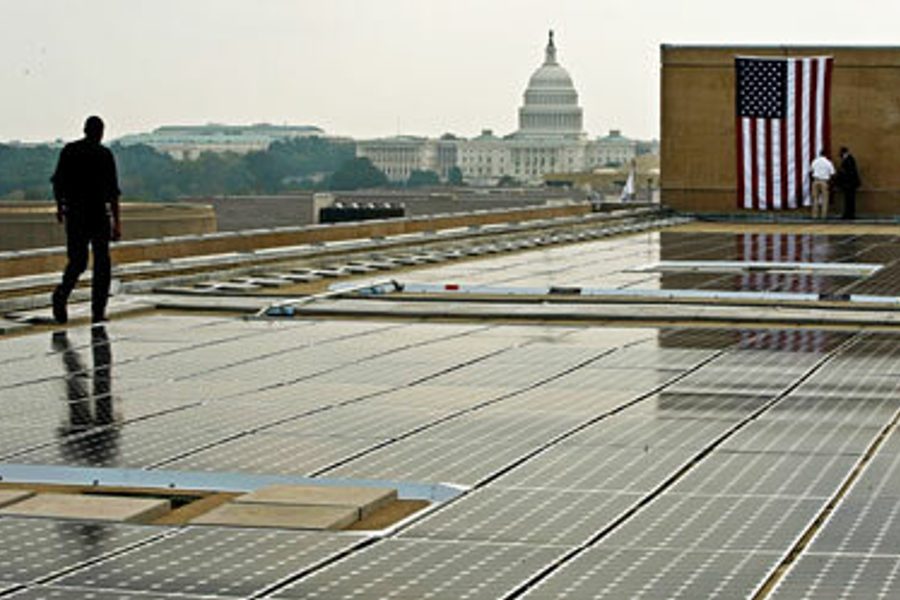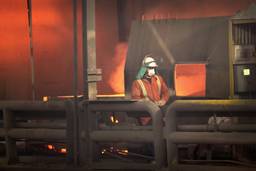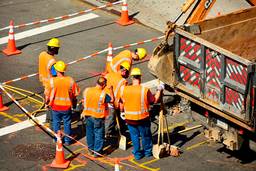
By Leo Gerard, president of United Steelworkers International
When the leaders of the G-20 nations arrive in Pittsburgh later this month, I want them to know I am fomenting revolution. Industrial revolution. Specifically, a 21st-century burgeoning of green manufacturing in the United States.
Americans going green - manufacturing windmills and solar cells - would benefit the whole world’s economy and environment. Restoring manufacturing would rebuild the U.S. economy. And a strong United States is essential because countries in the old world, such as Germany, and those in the developing world, such as China, depend on Americans to buy their exports.
For years, during every G-20 meeting, workers took to the streets to protest free trade, and they’ll resurface along Pittsburgh’s Liberty Avenue on Sept. 24 and 25 as American workers demand fair trade. But at each successive gathering of the G-20, the United States has produced fewer and fewer goods to exchange.
Over the past decade, 40,000 manufacturing facilities across the United States have closed. Since the recession began in December 2007, 2 million U.S. manufacturing workers lost their jobs, making their unemployment rate 12.4 percent. Those who found new jobs got lower pay, according to studies by the Economic Policy Institute.
This is a topsy turvy world for those who recall the nation’s flourishing factories during the 1950s and 1960s. Just after World War II, the rebuilding of Europe and Japan generated demand for U.S. exports. The United States ran a trade surplus that amounted to about 1 percent of gross domestic product.
In the 1970s, however, that flipped. Now, each year the United States imports hundreds of millions of dollars more in commodities - mostly manufactured goods - than it exports. As a result, the United States has accumulated a trade deficit over that period of more than $7 trillion.
This is all just fine with countries like China, Japan and Germany that base their economies on building goods for export. Their factories are humming; their citizens are working and saving. By contrast, U.S. factories are closing; our citizens are borrowing on credit cards and against the value of their homes to buy imported products. And the U.S. government is indebting itself to China to cover its trade shortfall. It’s an unsustainable debt cycle.
A sign of its fragility appeared this spring in the form of a slashed annual trade deficit. For 2006, before the recession, the deficit was $800 billion, representing roughly 6 percent of GDP. This year, if the rate remains as it was in the first quarter during the depths of the Great Recession, it will be $400 billion.
That collapse occurred because high U.S. unemployment begat low consumer spending, which begat low import demand. Americans locking their wallets touched countries worldwide. Factories closed across China. Japan’s economy contracted more rapidly than it had since the 1970s. Germany ran up a $24 billion budget deficit in the first half of this year, contrasting sharply with the $7 billion surplus it netted for the same period last year.
An industrial revolution in the United States is the solution. There are two key components. One is that the U.S. must manufacture commodities of international value to export to reduce its trade deficit. The second is that factories must provide good jobs for workers whose paychecks enable them to support their communities and to buy both domestic and imported goods.
To spur an industrial revolution - and to save the American economy - the U.S. government must begin observing free trade the same way the rest of the world does. Here’s a good example: Both the United States and China want to export renewable energy products. China is doubling down on its investment - even if it violates free trade agreements to do so.
Its largest solar-panel manufacturer, Suntech Power Holdings, told The New York Times recently that it was selling its panels in the United States for less than the cost of materials, assembly and shipping. They can do that because Chinese companies receive massive government support, including low-interest loans, cheap electricity, free land and grants for research and development.
Although China appears to be illegally dumping its panels on the U.S. market, it’s not going to stop. So there’s no point in the United States playing patsy and allowing more American industrial bankruptcies.
The United States needs a coordinated industrial policy like every other major First-World country to direct development. Focusing on green-energy development is the way to go - to create jobs, clean the environment and reduce reliance on imported oil.
President Barack Obama’s administration recently expressed interest in establishing a national manufacturing policy. A leading candidate to head the effort is a former Lazard Ltd. investment banker and former United Steelworkers financial expert named Ron Bloom. This could produce a blossoming of new American plants, which could, in turn, nurture all G-20 nations.
This post originally appeared at the United Steelworkers Blog.







